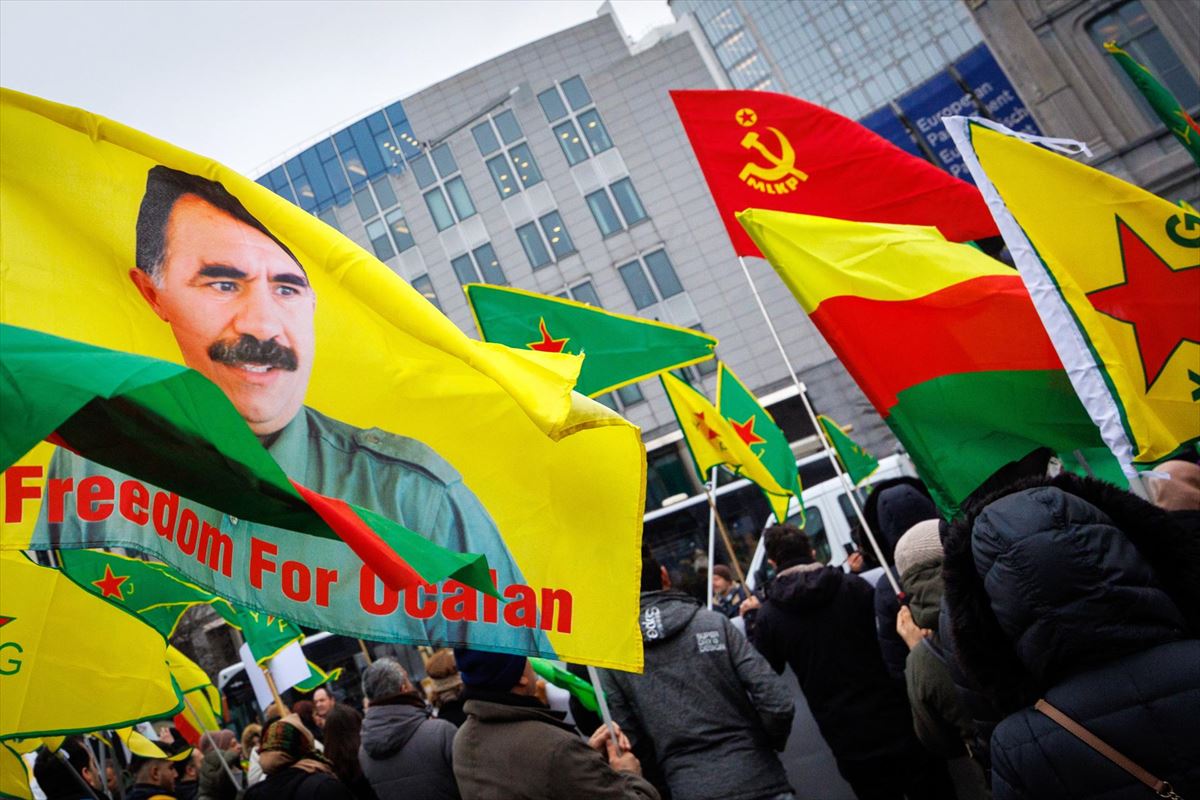The Kurds make up about 10% of Syria’s population. From the 1960s until the start of the civil war in 2011, they were the most oppressed and persecuted sector, but the previous regime allowed the PYD to establish its own administration in northeastern Syria, known as Rojava.
Türkiye appears to be gathering troops near the Syrian border, apparently for an attack on Kurdish territory in Syria, a state in a fragile transition after the fall of dictator Bashar al Assad. These are the keys and the context.
What role do the Kurds have in Syria?
The Kurds (who generally practice Sunni Islam) make up about 10% of Syria’s population. From the 1960s until the start of the civil war in 2011, they were the most oppressed and persecuted sector, but during the war the regime reached a non-aggression pact that allowed the PYD party to establish Home Rule (AANES) in the northeastern United States. Syria, known as Rojava.
The People’s Protection Units (YPG) are a Kurdish militia that emerged during the civil war and has ties to the PYD. They dominate much of northeastern Syria, a region with a Kurdish majority, a significant Arabic-speaking population and Christian and Yazidi minorities. The alliance with other groups is known as the Syrian Democratic Forces (SDF).
Ankara considers the YPG “terrorists due to its close ties” with the Kurdistan Workers’ Party (PKK), Türkiye’s Kurdish guerrilla group. The EU and the US also label the PKK as ‘terrorist’, but not the YPG. The PKK has claimed responsibility for the Türkiye attacks, most recently last October, but the YPG denies any activity on Turkish soil.
Rojava never claimed independence, and after the fall of Assad adopted the flag used by the rebels and started negotiations with the new authorities in Damascus, led by the Islamist militia HTS.
Turkey vs. Kurds vs. Islamists
HTS is the heir of the jihadist group Al Qaeda, whose Syrian branch founded the Islamic State (IS or Daesh), while the YPG is strongly opposed to radical Islam and fought heavy battles with the jihadists between 2014 and 2015, especially around the city of Kobani, for which they received military support from Washington. The United States still has troops on Kurdish territory.
Turkey launched its first military intervention in Syria in 2016 against IS, but in 2018 it captured the PYD-ruled Afrin region together with local militias. In 2019 it occupied a 100-kilometer border strip in the center-north, an offensive halted after Russia opposed it.

What is Ankara looking for in Syria?
Ankara insists that the Kurds must participate in building the new Syria, but believes that the YPG “is a terrorist group led by fighters from Turkey or Iraq that oppresses the Syrian Kurds and should be disbanded.”
One of their reasons: “the YPG is close to the Kurdish and Turkish left-wing movements in Turkey, and is the strongest opposition to President Recep Tayyip Erdogan and his party, the Islamist AKP.”
Erdogan’s ambition is to end the conflict with the PKK by integrating the Kurds into his Islamic leadership project, while Turkey’s pro-Kurdish party (DEM) demands a secular and democratic society. Overthrowing the YPG would theoretically weaken the leftist current among Turkey’s Kurds.
Will there be an attack?
After Russia’s withdrawal and the dissolution of the regular Syrian army, the YPG has the United States as an ally and it is not clear that the still president Joe Biden will intervene. On the contrary, Donald Trump, who will come to power on January 20, almost certainly will not: in 2019 he authorized the Turkish attack on the YPG and proposed withdrawing US troops from Syria.
Support for the YPG from the autonomous region of Iraqi Kurdistan cannot be expected, as the government is a close ally of Ankara and economically dependent on trade with Türkiye. Although it cannot be completely ruled out.
What would the attack look like?
As with the previous attacks, Ankara would have local militias, mainly from the Islamic sphere, but this could cause polarization across Syria, creating distrust among the Christian and Alawite populations, who are against Islamism.
If a transitional government is not quickly established in Syria that is supported by all minorities, a new civil war or an Islamist hard core regime is in the offing.
Source: EITB
I’m Wayne Wickman, a professional journalist and author for Today Times Live. My specialty is covering global news and current events, offering readers a unique perspective on the world’s most pressing issues. I’m passionate about storytelling and helping people stay informed on the goings-on of our planet.



